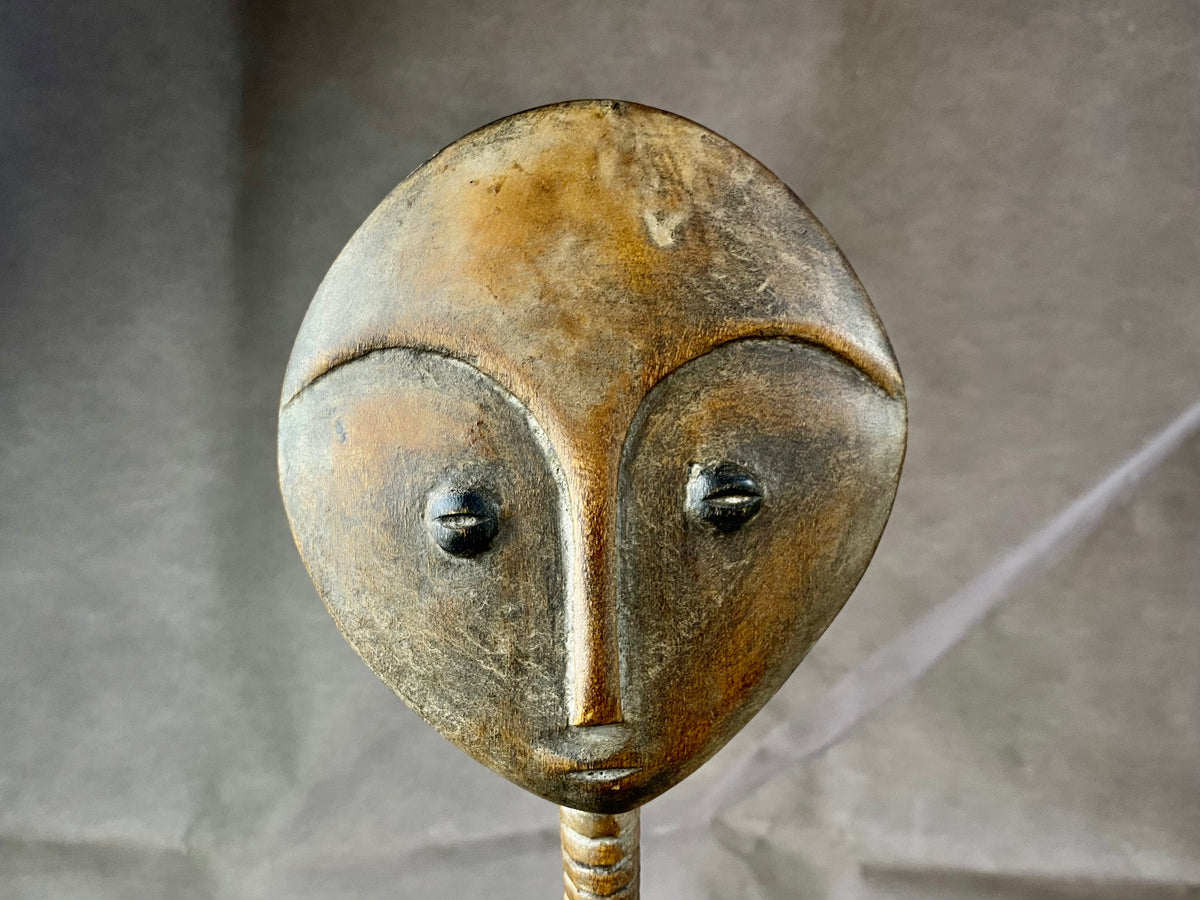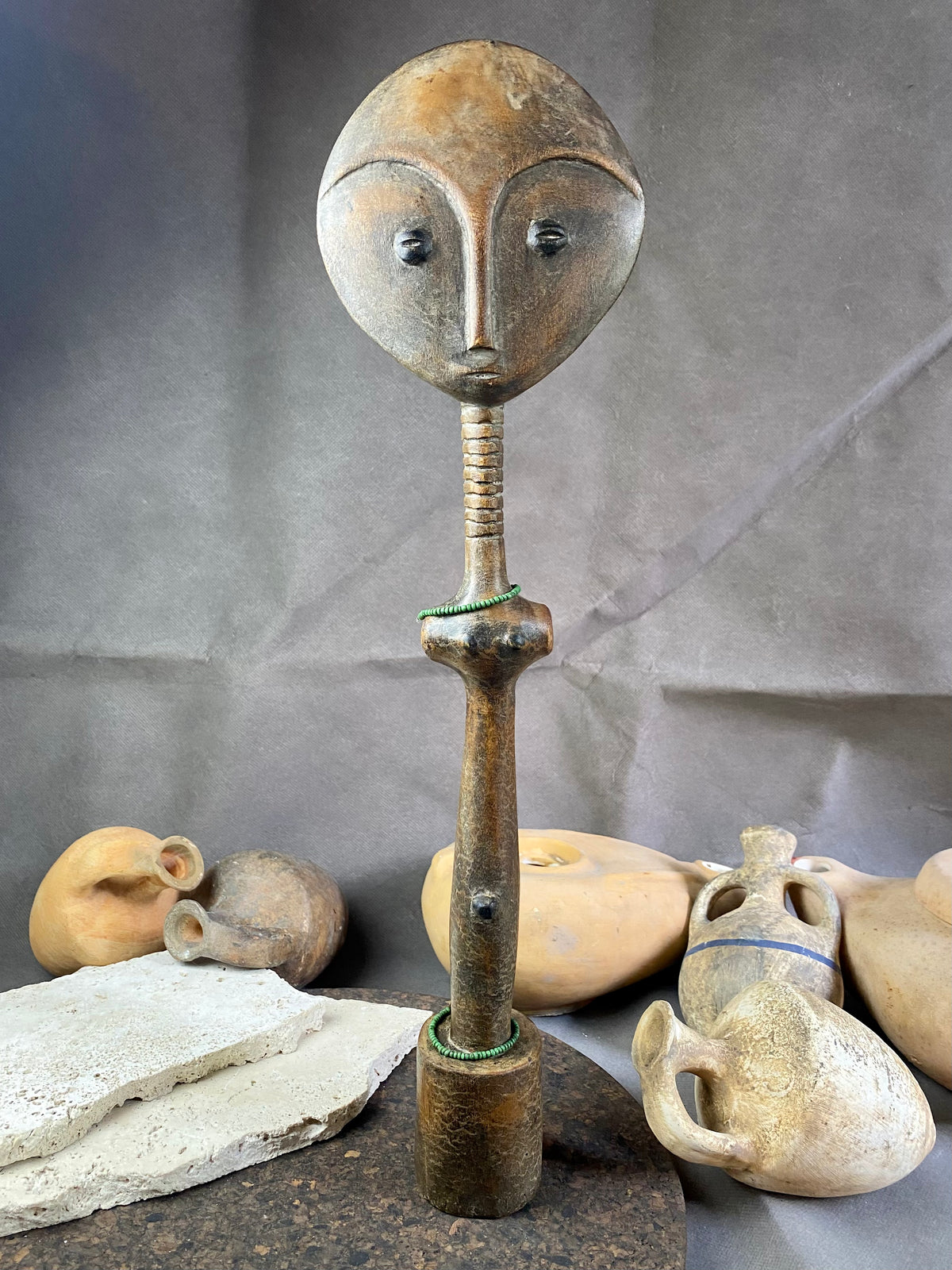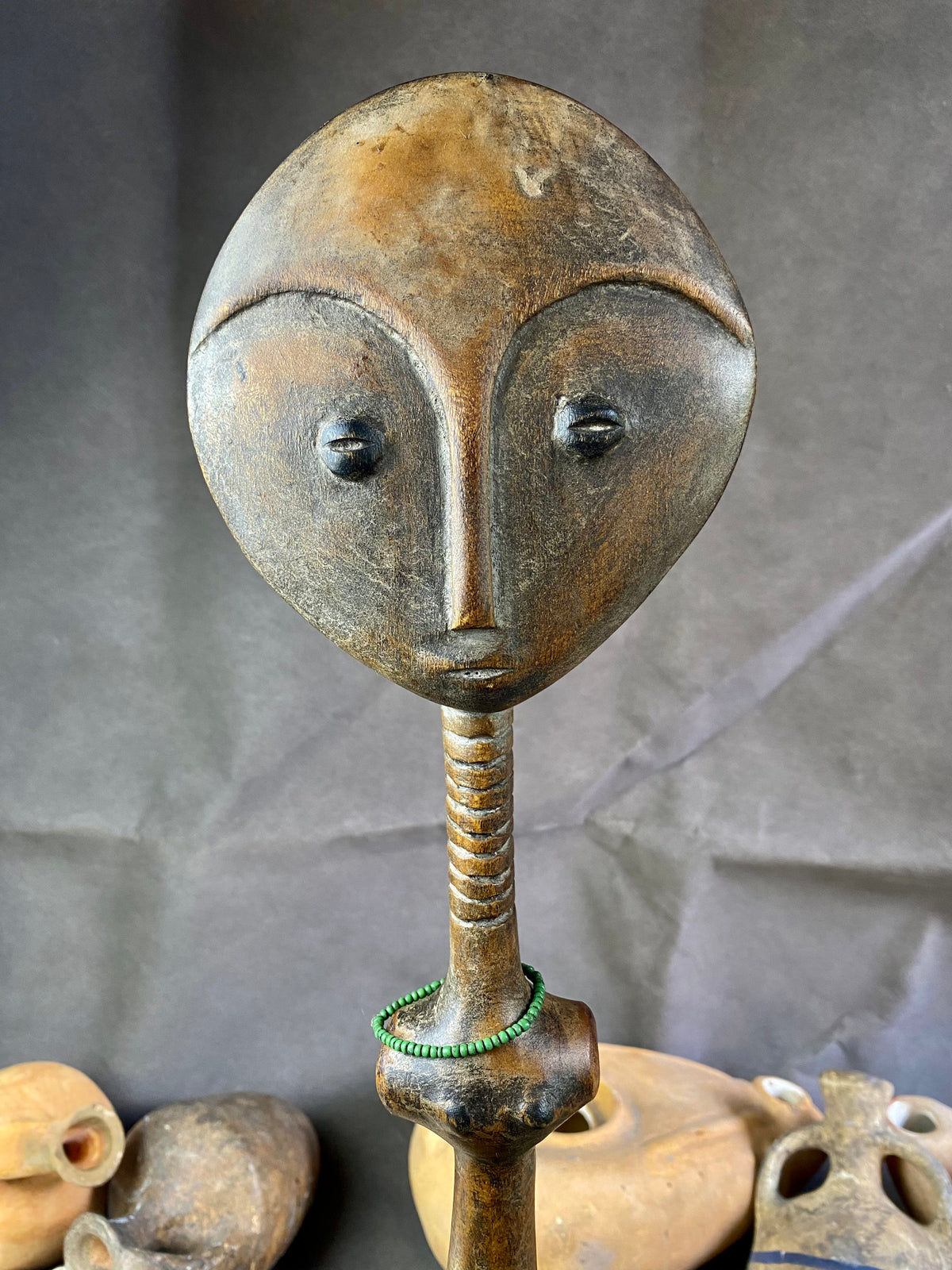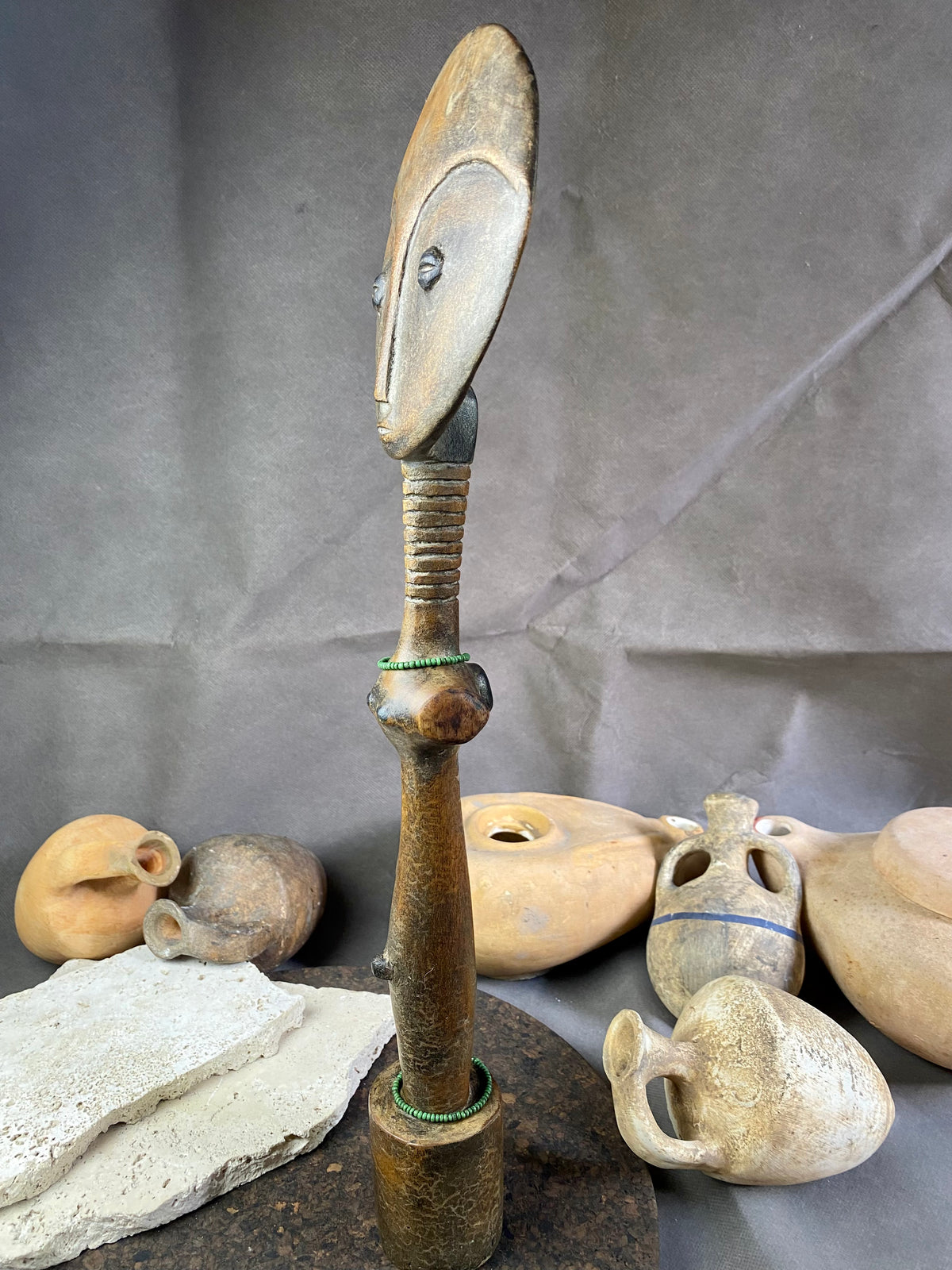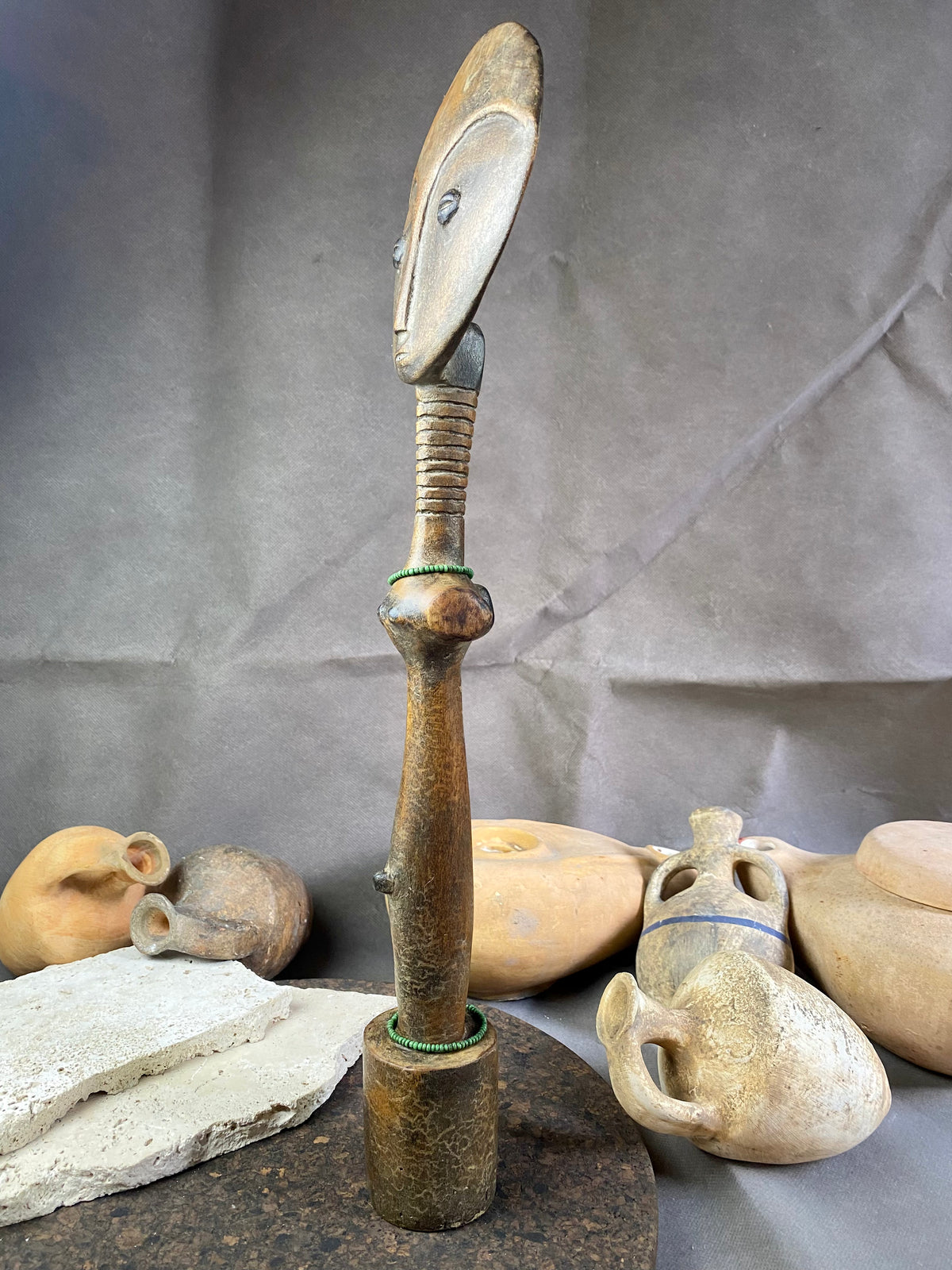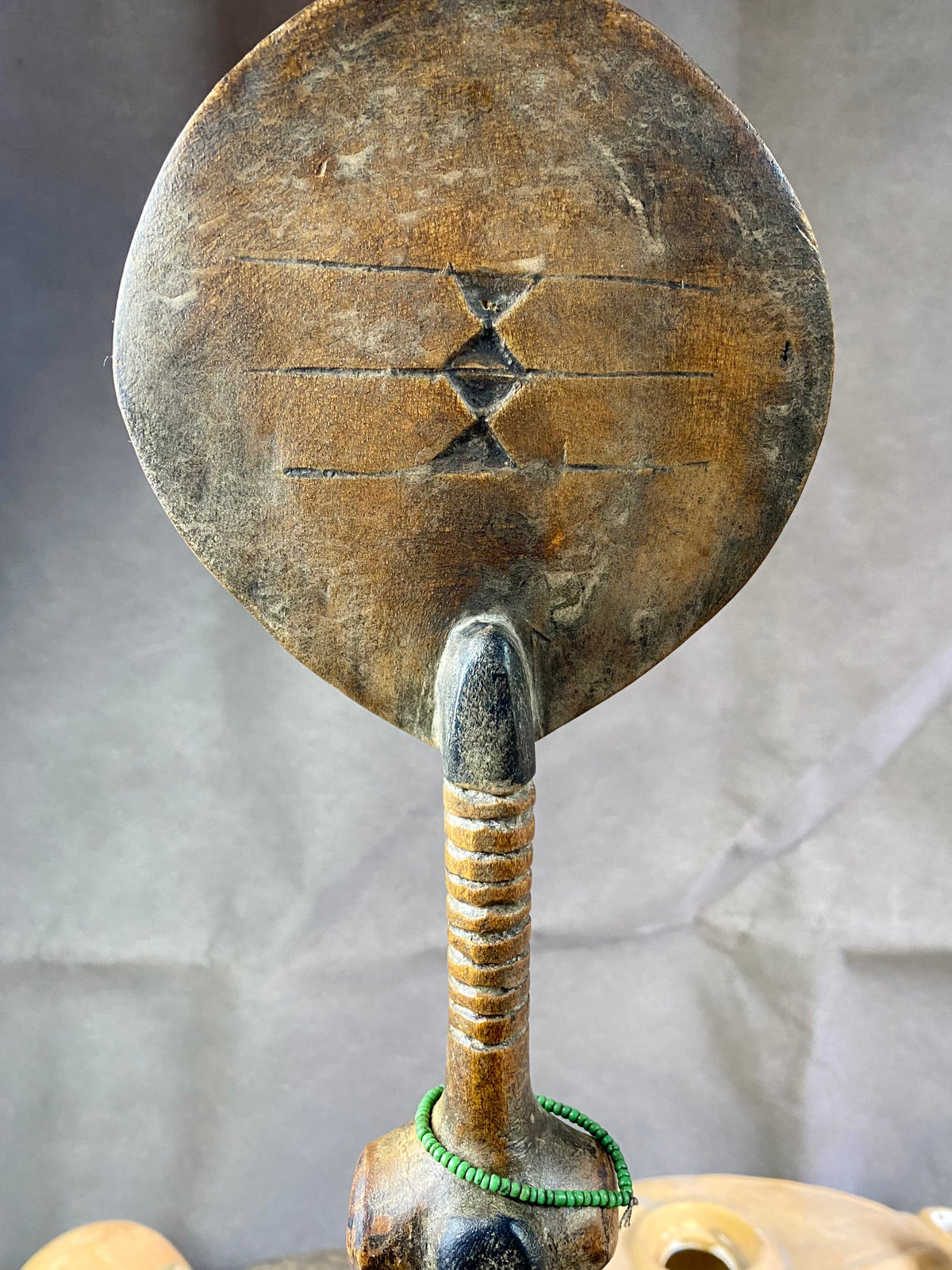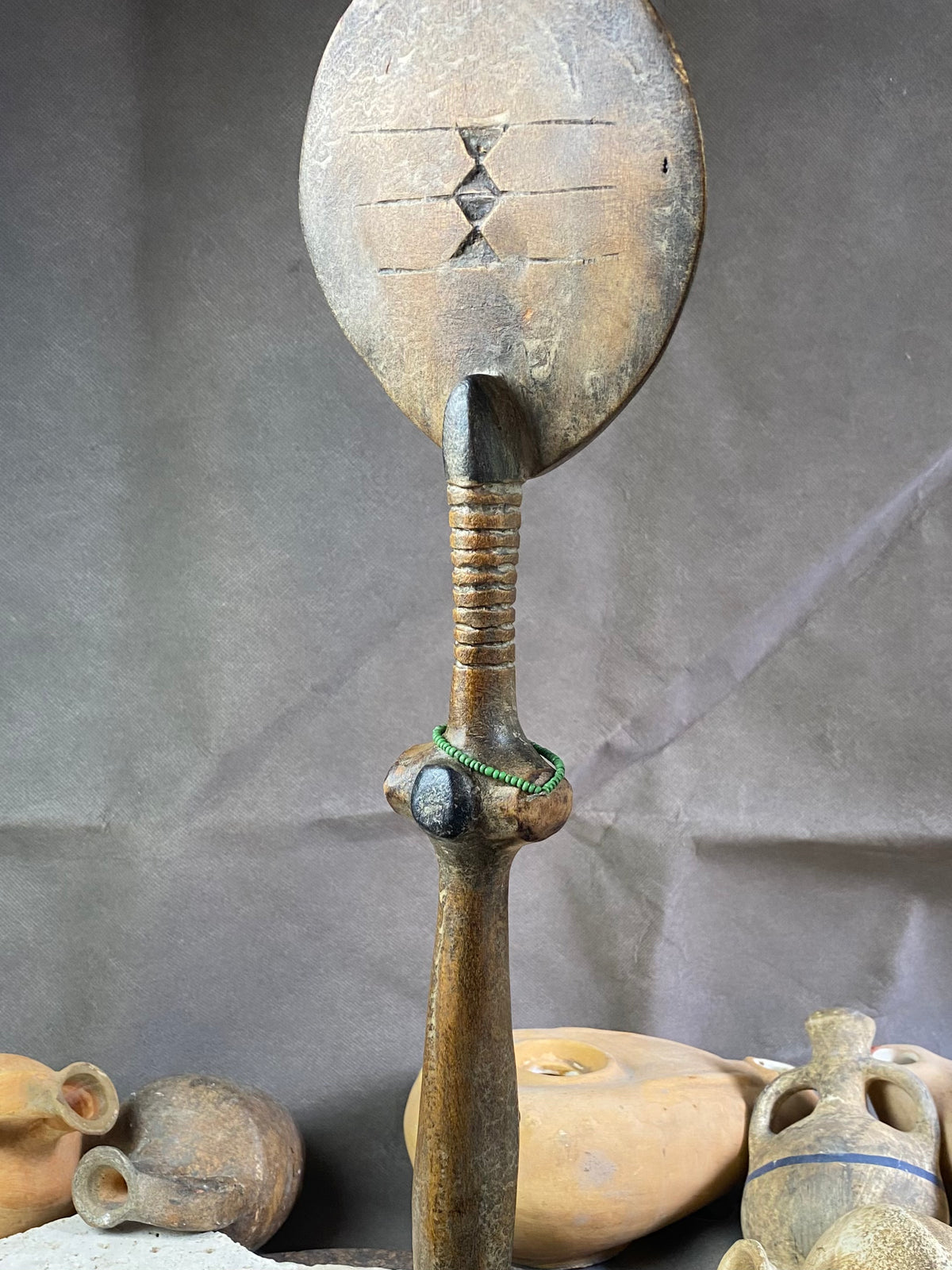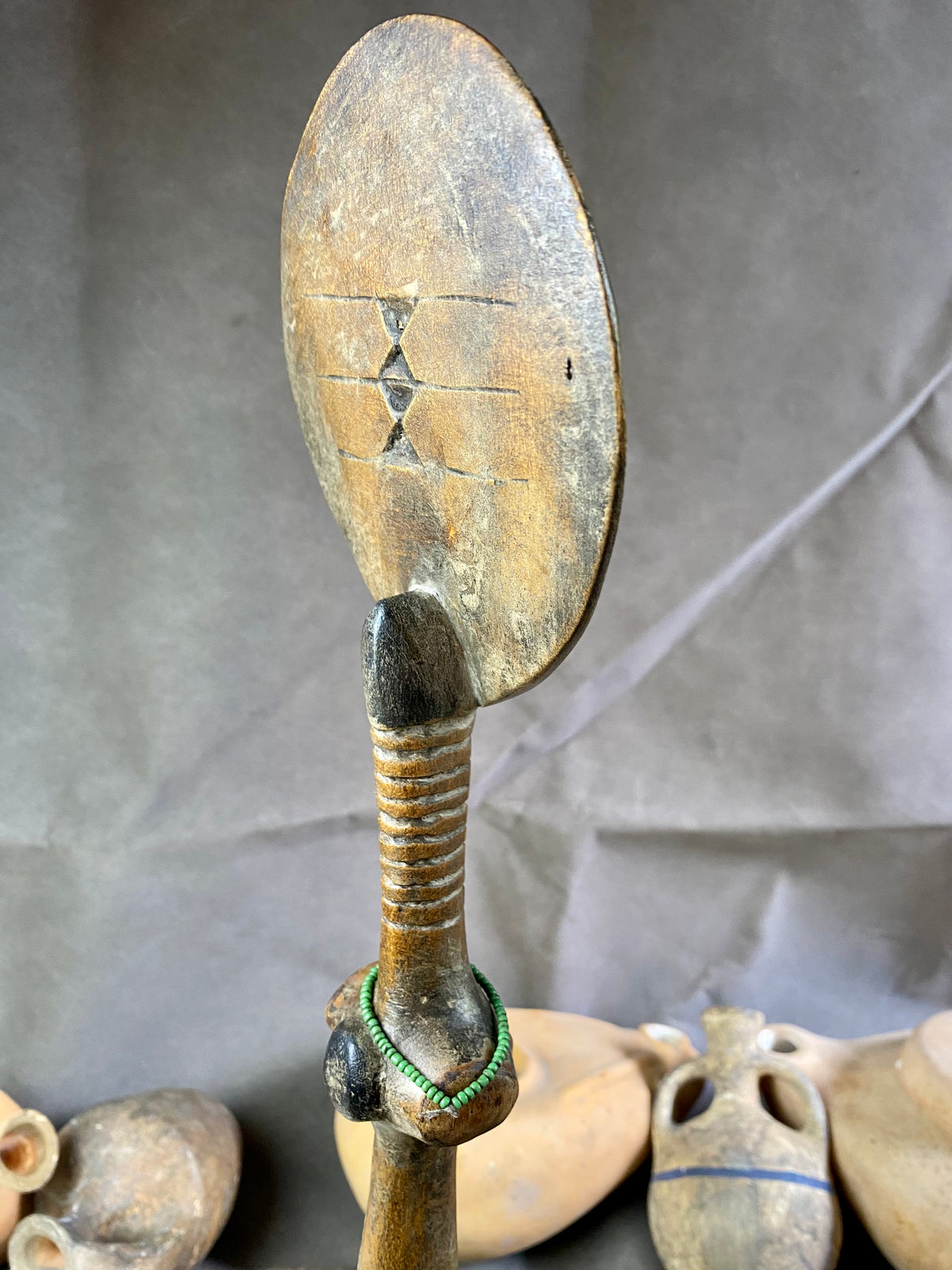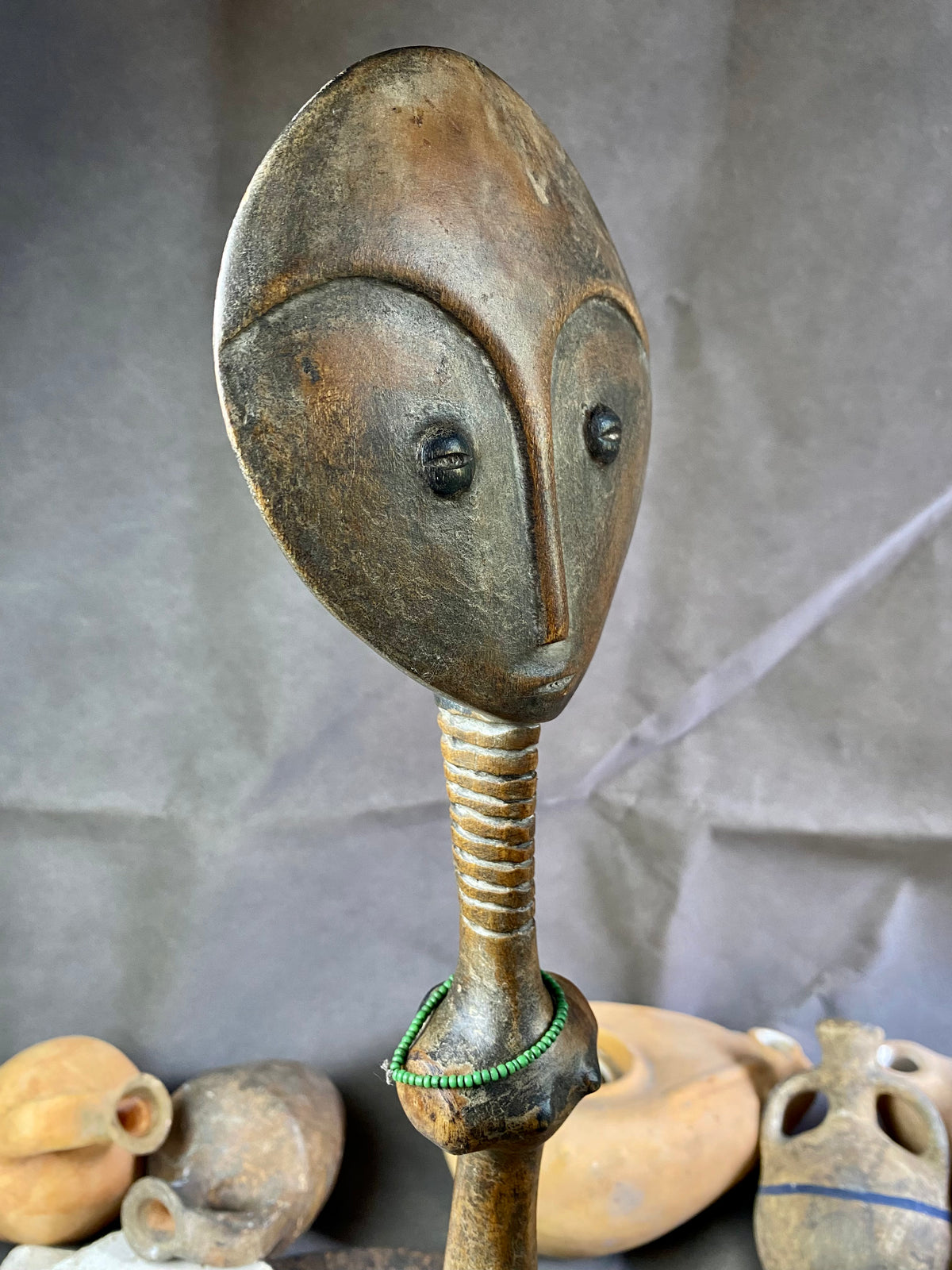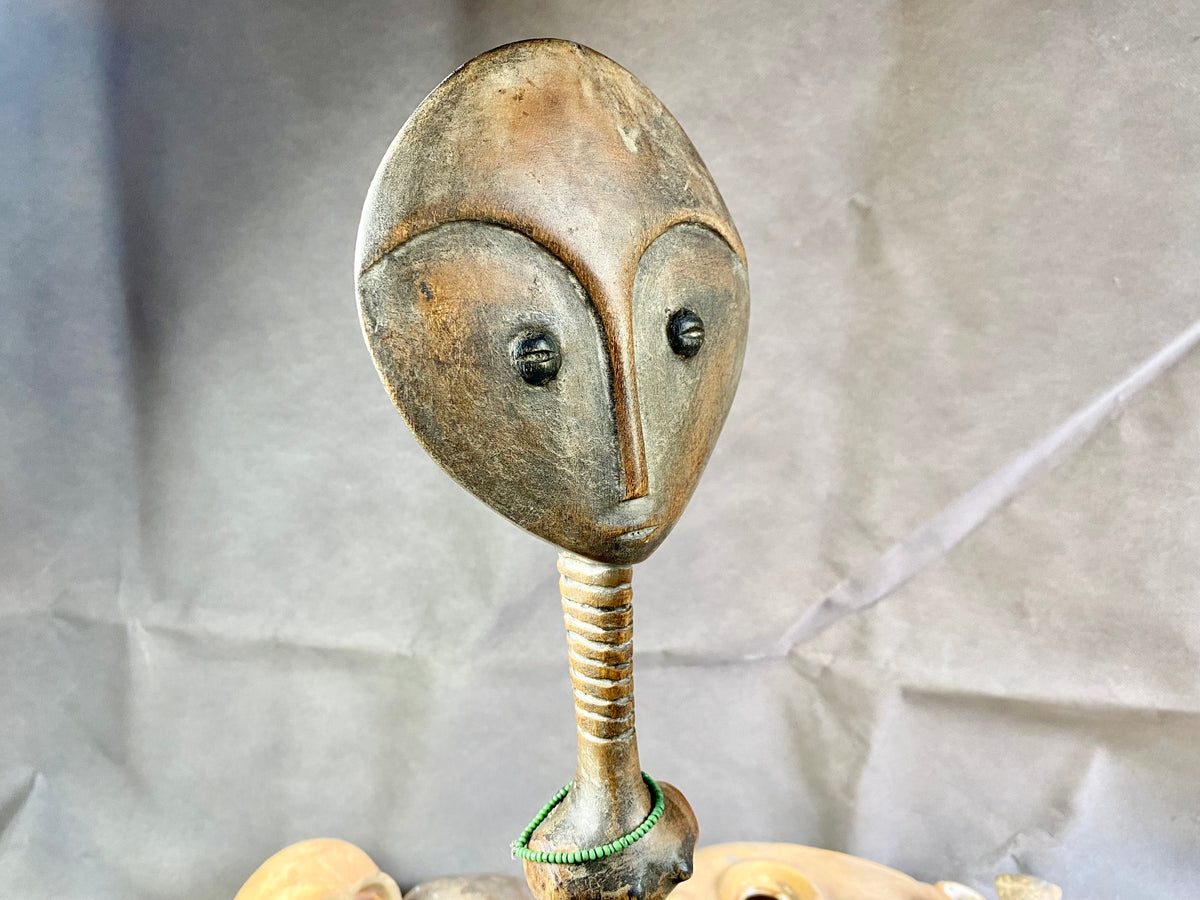Your Cart is Empty
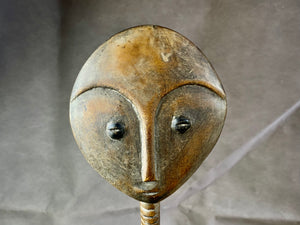


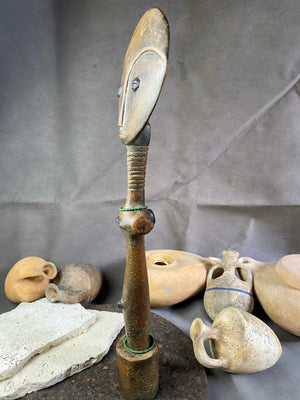
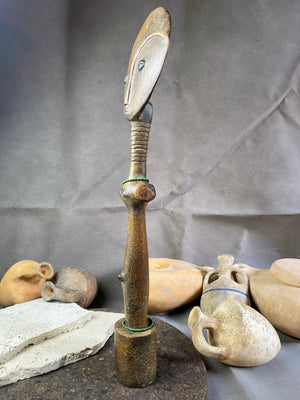

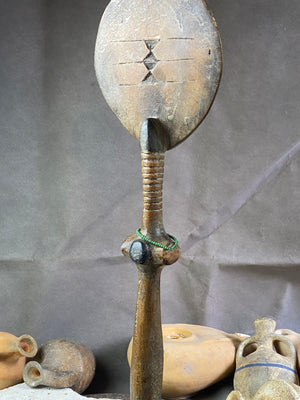

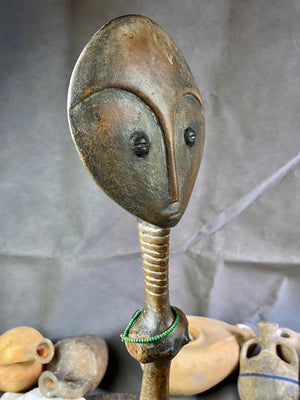

Sold out
Akuaba Fertility Figure
$139.00
Akuaba Doll, Asante, from Ghana.
Amongst the Asante these figures are called Akua’ba, or Akua’s Child, invoking their earth goddess of fertility Asase Yaa.
Dating from the late 20th Century, this vintage figure is carved from a fine-grained wood, has a natural patina worn smooth with handling, and the pleasingly abstract iconography typical of Asante idol carving. She wears carved neck rings as well as beaded decoration at her base, and what appears to be a stylised backpack on her back. Akuaba figurines are not rare, but good and well proportioned examples are. This particular doll has an exceptionally well carved child-like face, with other features hinted at rather than explicitly carved in place. At her base, she terminates in a point placed on top of a prominent stand, rather than the flared base typical of so many Akuaba figures.
The Akuaba fertility idol dates to a well known Ghanese legend that tells of a young woman named Akua who was having difficulty conceiving. She consulted a medicine man who advised her to make a wooden child and carry it on her back, dressing, bathing and adorning it with beads as one would a real infant. Faithfully following the priest's advice, a healthy girl child was soon born. Other women emulated Akua, and all figures are now called Akua’ba in her honour (Isn’t S/He A Doll?, Cameron 1996). These figures are very common amongst Asante, Fante and Bono women, and as they are imbued with magical properties, are treated as real babies. A child born is encouraged to play with the doll to develop its own maternal instinct. The majority of Akuabe dolls are female, reflecting the importance of female energy as well as the typically matrilineal nature of Ghanese culture.
Measurements: Height 43 cm (17.5"), width of head 11.5cm

